SEWAGE TREATMENT
Sandcel sand polishing filter
OVERVIEW
The Sand polishing filter from Tricel (Sandcel) are secondary or tertiary treatment systems that comply with the Environmental Protection Agency’s (EPA) Code of Practice.
Tricel Sandcel panels are made from a composite material known as Sheet Moulding Compound, or SMC, a type of glass-reinforced plastic.
They are strong, durable, chemical-resistant, and impact-resistant, and the material will not rot or deteriorate over time.
Table of Contents
If you have any questions, feel free to call us
vISIT OUR virtual SHOWROOM
Where should a sand polishing filter be used?
A sand polishing filter is used after a septic tank or wastewater treatment unit to treat further the effluent (based on ground requirements).
- Sand polishing filter as a secondary treatment system
If placed after a septic tank (primary treatment), a Tricel Sandcel is described as a secondary treatment system.
- Tertiary treatment system
If it is placed after a wastewater treatment plant (secondary treatment), the Sandcel is then described as a tertiary system.
How does a Sandcel sand polishing filter work?
Sandcel is a pipework system designed to direct wastewater to stratified layers of certified sands according to current EPA guidelines for effluent treatment.
A service pod is used to access all of the pipework in these filters, whether installed above or below ground.
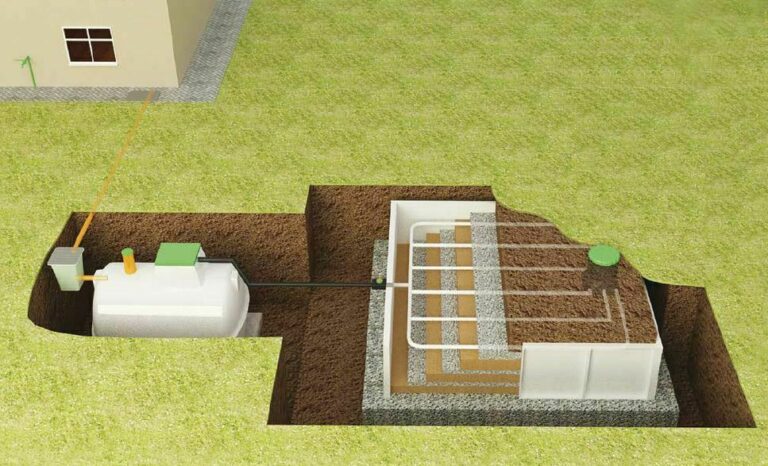
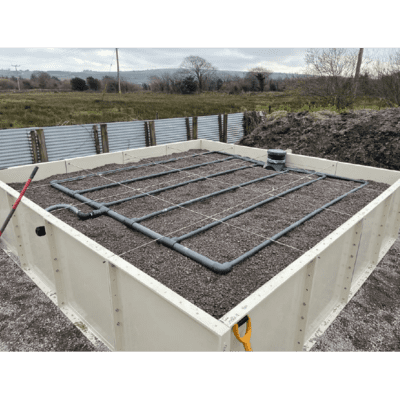
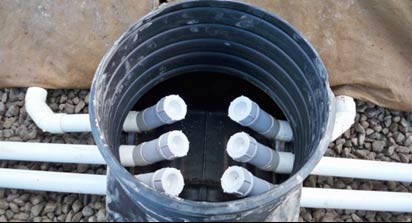
What are the benefits of using a sand polishing filter, and why should you use it or recommend it?
Sandcel’s sand polishing filter is suitable for homeowners, site assessors, and engineers alike because it meets a wide range of requirements.
Homeowners
- Ideal for smaller sites (only 16 m2 for an application with six people, reducing the need for a large percolation area).
- The Sandcel sand polishing filter blends into any garden design, as it can be buried, covered with soil, and planted with grass.
- Suitable for sensitive sites with a high level of treatment.
- Low maintenance requirements, maintenance contract available.
Site Assessors and Engineers
- Reduces the size of the percolation area, which is ideal for tight sites.
- Reduces the soil depth in your rock bed (free-draining soil); 900 mm is usually required.
- Constructed from high-quality materials (GRP panels, certified sand, gravel).
- Designed for high effluent treatment (using a sand polishing filter bed to ensure an even distribution of effluent around the entire bed).
- Ideal for sensitive areas (e.g., near a river or in a conservation area) thanks to a high quality of effluent treatment, which helps preserve the environment. Sandcel reduces nutrients discharged into the environment.
How to build a sand filter?
Sand polishing filters made by Tricel are constructed as follows:
- GRP panels
- Certified sands
- 10mm pea gravel
- Servicing pods
- Pipes
- Geotextile cover (as a top layer to block the soil from clogging the pipework)
Sand polishing filters are installed after a packaged wastewater treatment system or septic tank.
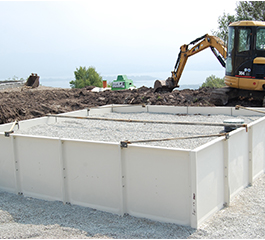
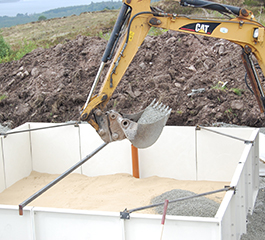
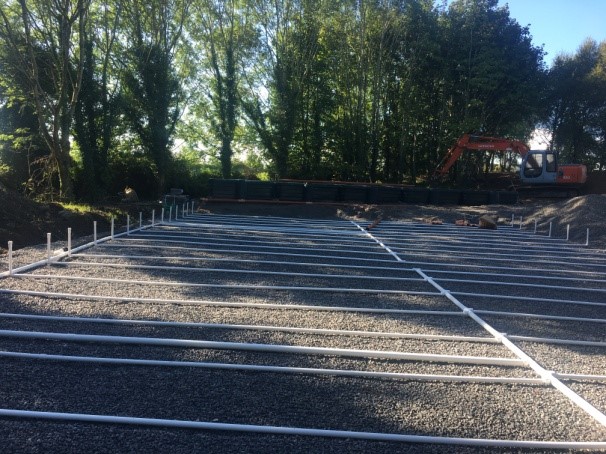
How deep does a Sandcel sand polishing filter go?
Depending on how much soil exists on-site, the Sandcel sand polishing filter can be installed above or below ground.
We recommend leaving 100mm between the top of the panels and the ground level to ensure enough soil to cover the pipes and promote grass growth.
Can a sand polishing filter be buried?
Sandcel sand polishing filters can be buried, but they must be placed 400mm above the bedrock or water table, whichever is higher. This prevents contamination of groundwater.
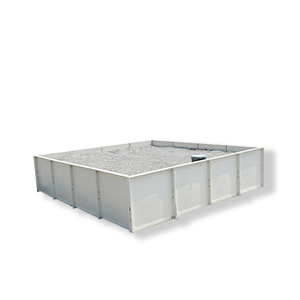
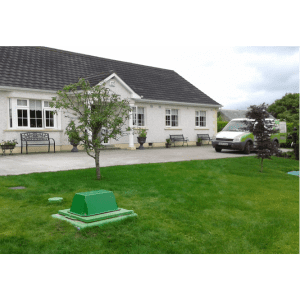
How large is the base?
EPA Code of Practice tertiary distribution area formula determines the base size.
0.125 x PE x T = Area in m2
Standard sizes and dimensions of Tricel’s Sandcel Sand Polishing Filters
|
Details
|
Sandcel 900
|
Sandcel 1200
|
Sandcel 1500
|
|---|---|---|---|
|
Capacity (Liters per day)
|
900
|
1200
|
1500
|
|
Length (mm)
|
4000
|
4000
|
6350
|
|
Width (mm)
|
3850
|
5000
|
4000
|
|
Depth (mm)
|
1000
|
1000
|
1000
|
|
Footprint (m2)
|
15.4 (165.77 sq/ft)
|
20 (215.28 sq/ft)
|
25.4 (269.10 sq/ft)
|
Gravel calculator for Tricel’s Sandcel.
How to calculate how much gravel is required?
Use the illustration below (Sandcel stratified layers) as a reference for the calculator.
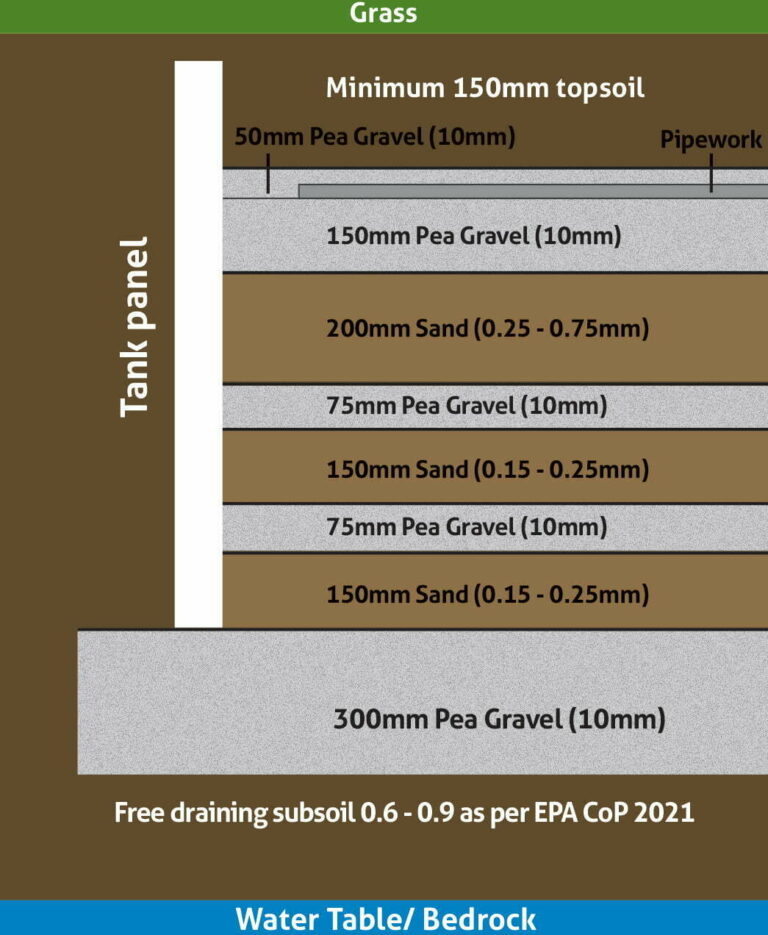
Note: these calculations only apply to Tertiary systems, so they are not appropriate when Sandcel is used as a secondary treatment system.
Step 1: Area calculator
A gravel distribution bed is required to disperse the treated effluent from the Sandcel. A 300mm layer of 10mm gravel should be used as the distribution bed.
Concerning calculating the area, you must have available:
- the population equivalent (PE) value
- and the surface/subsurface value
For subsoil with a Subsurface/surface the distribution area is calculated using the below table from EPA Code of Practice 2021.
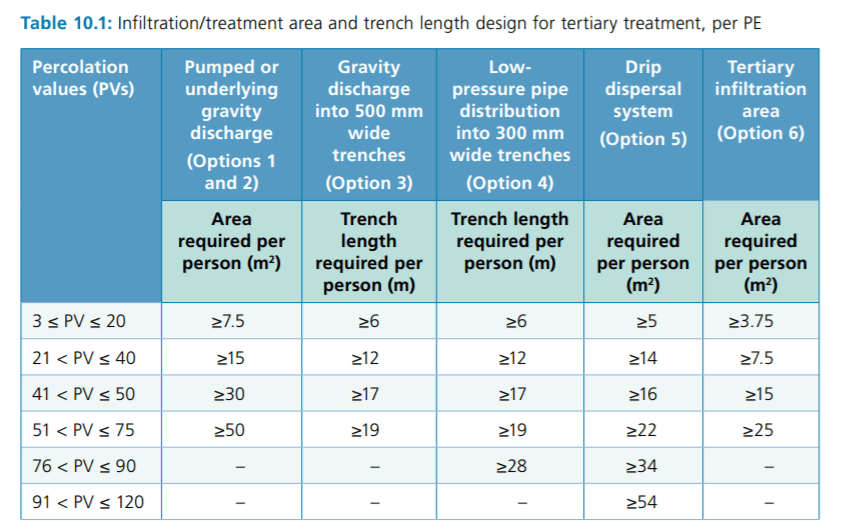
For example with a 6PE with a subsurface/surface value of 3-20
On a range of 3 < PV < 20, looking at the column “tertiary infiltration area (option 6)”, select the correct area required per person based on the subsurface/surface value. In our example, the value is >3.75 m2.
Then take your PE value (6) x per the area required per person (3.75m2) = 22.50m2 total required area.
Step 2: Base gravel calculator for Sandcel sand polishing filter
Using the formula below, you can calculate how much gravel you need for your site once you have calculated its area. Please note two tonnes of 10mm pea gravel is required per m3.
Formula = Area in m2 (calculated above) x 0.3 (300mm depth) x 2 (2 tonnes / m3).
Step 3: Sandcel infill gravel calculator
350mm of pea gravel sprayed over different layers (see above sketch of the Sandcel stratified layers) is required to fill in the inside of the GRP panels.
Formula = 350mm x area in m2 x 2 (2 tonnes / m3).
Total sand required for Sandcel installation = results step 2 + results step 3 = tonnes of 10mm pea gravel required.
Gravel requirements for standard size Sandcel sand polishing filters
See below examples of standard Sandcel dimensions and gravel quantities in tonnes.
NOTE: Dimensions add 150mm to the below dimensions to include the GRP panel enclosure
|
Dimensions of the area
|
Sandcel 900
|
Sandcel 1200
|
Sandcel 1500
|
Sandcel 1800
|
|---|---|---|---|---|
|
3850mm * 4000mm
|
6.08m3 or 13 tonne
|
|
|
|
|
5000mm * 4000mm
|
|
8m3 or 16 tonne
|
|
|
|
6350mm * 4000mm
|
|
|
10.4m3 or 21 tonne
|
|
|
7500mm * 4000mm
|
|
|
|
12m3 or 24 tonne
|
Who supplies the sands and gravel ?
Builders and installers are responsible for pea gravel during a Tricel Sandcel installation, while Tricel is responsible for the sand. Sand used throughout has been certified compliant with the EPA Code of Practice, and these particles are washed and graded to ensure that little or no binding occurs during use.
Tricel is responsible for the delivery and installation of the Sandcel sand polishing filter.
The contractor carries out all other works, such as excavation, concrete surround, pumping main, etc.
Images of an installation
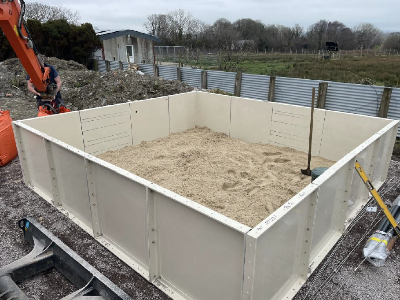
Base gravel & panels assembled & first Layer of Sand, Placed
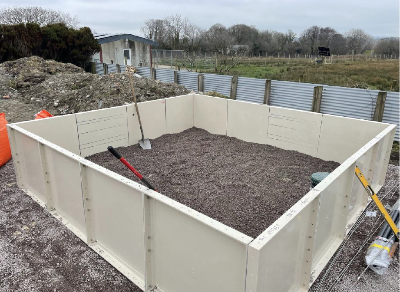
First Layer of Pea Gravel, Placed
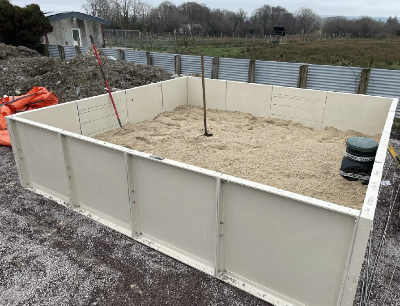
Second Layer of Sand, Placed
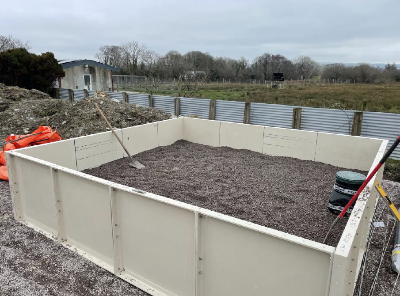
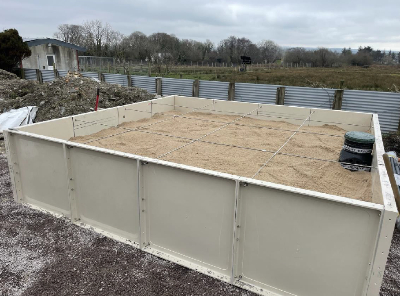
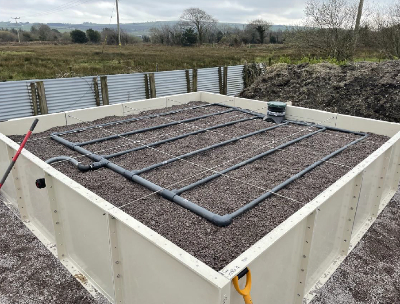
Base layer of gravel distribution layer and distribution pipework
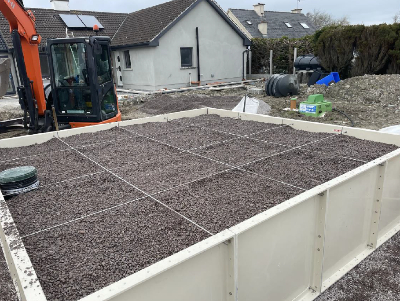
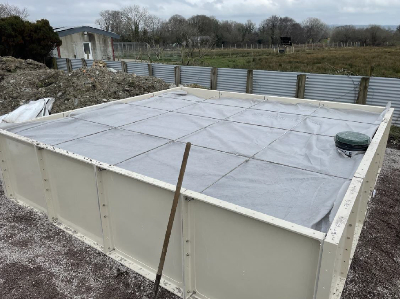
Our range of products
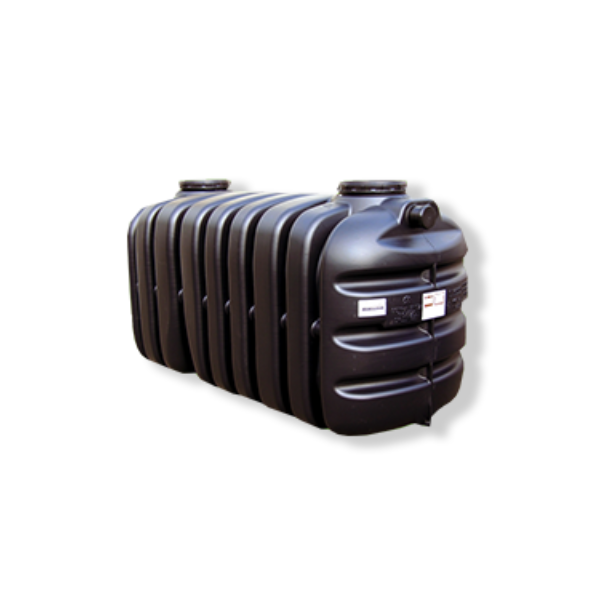
Tricel Vento Septic Tank
Shallow dig tank, strong & robust underground tank, No electrical or moving parts. Ideal for sites with good drainage & plenty of space.
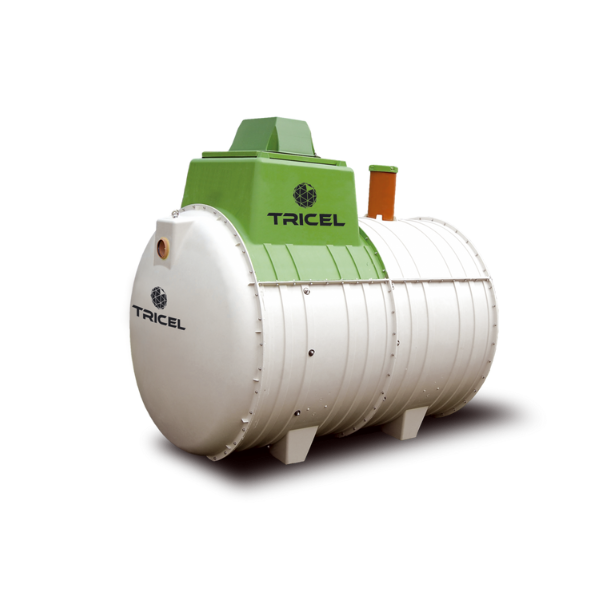
Tricel Novo Sewage Treatment Plant
Durable & long lasting SMC tank, shallow dig tank, easy installation (Plug and Play), long life components.
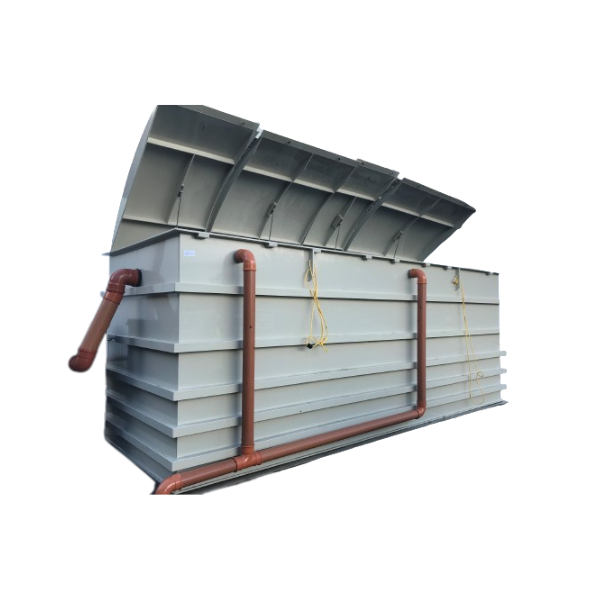
Tricel Maxus Sewage Treatment Plant
Commercial plant. Submerged Aerated Filter (SAF) technology. Ideal for every project over 50 Population Equivalent.
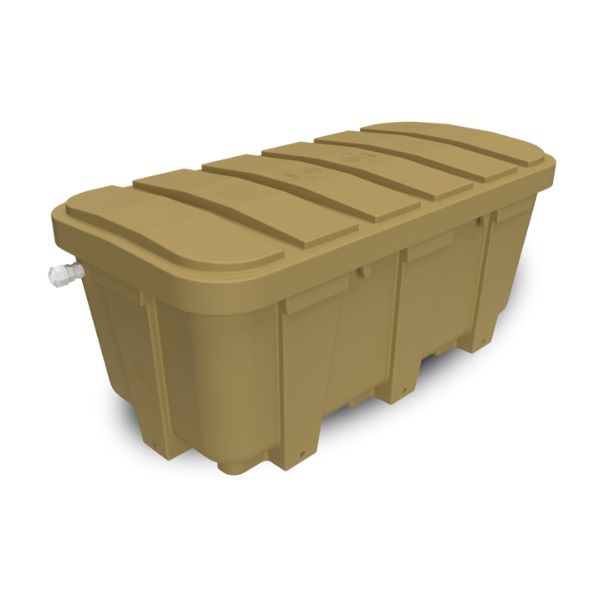
Tricel Tero Tertiary Treatment
An eco-friendly and modular system with proven E.Coli Treatment capabilities in line with the new EPA requirements.
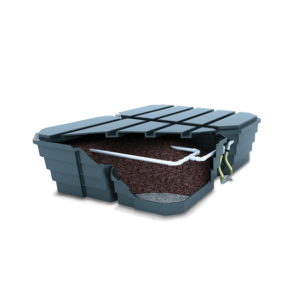
Tricel Puraflo Secondary treatment plant
Ideal for sensitive sites, compliant to Irish Standard, small footprint.

Tricel Sandcel
Sand Polishing Filter
Provides a dual function of polishing the effluent from a wastewater treatment system and disposing it into groundwater.
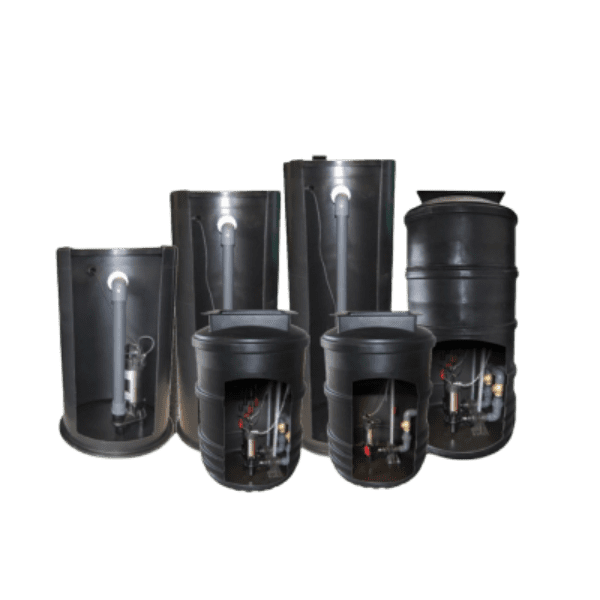
Tricel Pumping Stations
Pump fluids from one place to another where gravity drainage cannot be used, easy and trouble-free installation
50 YEARS IN BUSINESS
A highly successful multinational corporation with over 50 years’ valuable industry experience
SEWAGE TREATMENT PLANTS
Plants available for all capacities, from 1PE up to 50PE. Free advice on request.
Fast Delivery
On-time delivery is a core requirement of our successful business operations
Key Features

Fast Delivery

Certified

RELIABLE & Long-lasting
Articles you might be interested in
Frequently Asked Questions
WHAT IS PE ?
PE represents the initials of Population Equivalent. Population equivalent: conversion value which aims at expressing non-domestic applications in terms of domestic loading based on 1 person creates 60 g/day BOD5 and 150l/day. (Code of Practice: Wastewater Treatment and Disposal Systems Serving Single Houses (p.e. < 10), EPA)
DIFFERENT PRODUCTS SOLD BY TRICEL
Tricel Novo & Vitae
Both are wastewater treament plant solutions manufactured by Tricel. Wastewater treatment plants offer a superior quality of treatment. For example, the Tricel Novo comprises of three independent wastewater treatment zones and offers an average of efficiency of 95.9% BOD removal.
This is a higher treatment standard than the effluent from a septic tank. Please note: all wastewater treatment plants used in Ireland must comply with the EN12566-3 standard and all septic tanks must comply with the EN12566-1 standard..
Tricel Vento
The septic tank from Tricel is manufactured as a primary treatment. Designed for the settlement of your effluent. This product may need an additional treatment like the Sandcel or Puraflo.
WARRANTIES
Most Tricel products have a warranty. To discover all the guarantees on our products, as well as on the internal parts, consult our dedicated product pages.
WHAT IS THE QUALITY OF THE WASTEWATER PRODUCED?
The required standards are 20:30:20 BOD, SS, NH4. All Tricel produces exceed the requirements when tested to En12566-3 and comply with SR66.
Learn more about our certification
MAINTENANCE ON THE WASTEWATER TREATMENT SYSTEMS
Tricel recommends that you maintain your device to the fullest. You are obliged by law to avoid all types of pollution or nuisances. Do not hesitate to contact us for more information on our service contracts. An annual maintenance contract may be offered.
Get in touch
Error: Contact form not found.